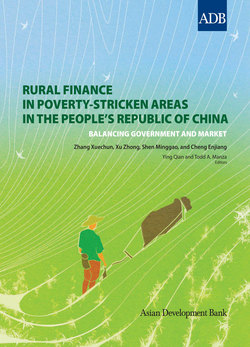Читать книгу Rural Finance in Poverty-Stricken Areas in the People's Republic of China - Xuechun Zhang - Страница 42
На сайте Литреса книга снята с продажи.
Capital Outflows
ОглавлениеSince the mid-1990s, the sluggish and volatile nature of agricultural product prices, the low productivity of small-scale, self-sufficient rural households, and the large number of closures of township enterprises have contributed to the lack of investment opportunities in rural areas. This has forced many farmers to migrate to other provinces. The earnings of these farmers are remitted back to the rural financial institutions in their hometowns but then flow to the eastern and more-developed regions through institutional purchases of Treasury bonds and deposits in upper-level entities. As a result, insufficient funds are available for sannong, and rural economic development enters a vicious cycle.
Postal savings enjoys very high redeposit interest rates at the PBC, which translates into a hemorrhage of rural funds into other regions
Rural funds flow out through three channels: state-owned commercial banks, postal savings, and RCCs. State-owned commercial banks have shrunk their branch networks and tightened credit controls, and most county and lower-level offices of the four largest state-owned commercial banks are required to redeposit funds in their upper-level entities. Postal savings enjoys very high redeposit interest rates at the PBC, which translates into a hemorrhage of rural funds into other regions. Finally, many RCCs purchase Treasury bonds, deposit funds in other financial institutions, and lend to urban clients, which translates into additional outflows.
